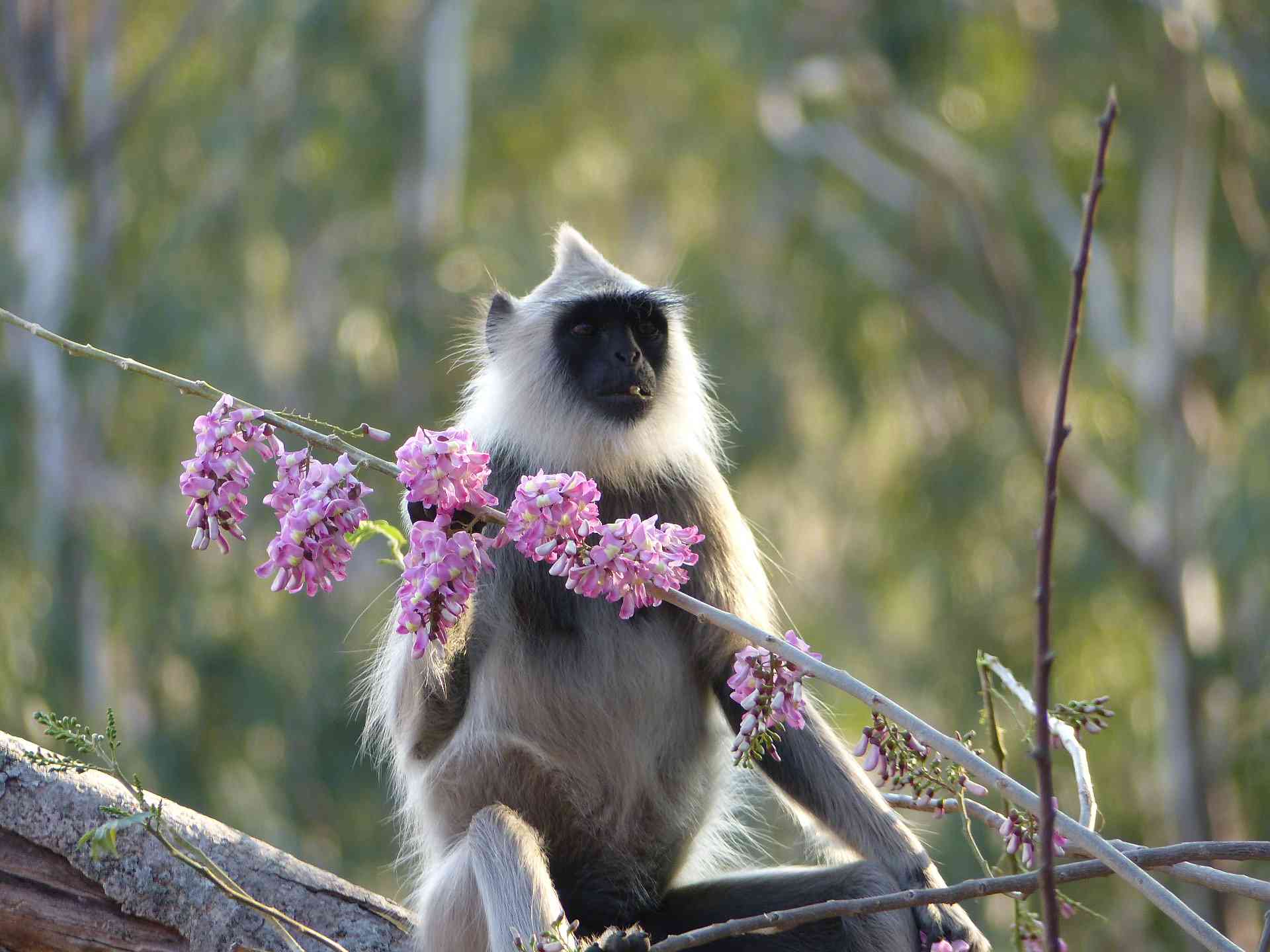Ahead on the sunlight-dappled road, an obstruction stirs on the macadam. Framed in a peachy-pink canopy of trees in riotous bloom, it’s a large monkey, its sickle-curved tail held aloft like a pennant. The animal crouches, then turns its coal-black face towards me as I slow down the car. It does not budge at the vehicle’s approach. Not one bit. It’s a female Tufted Gray Langur, cradling in her arms a younger version of herself. She is sitting on a veritable carpet of fallen Gliricidia flowers.

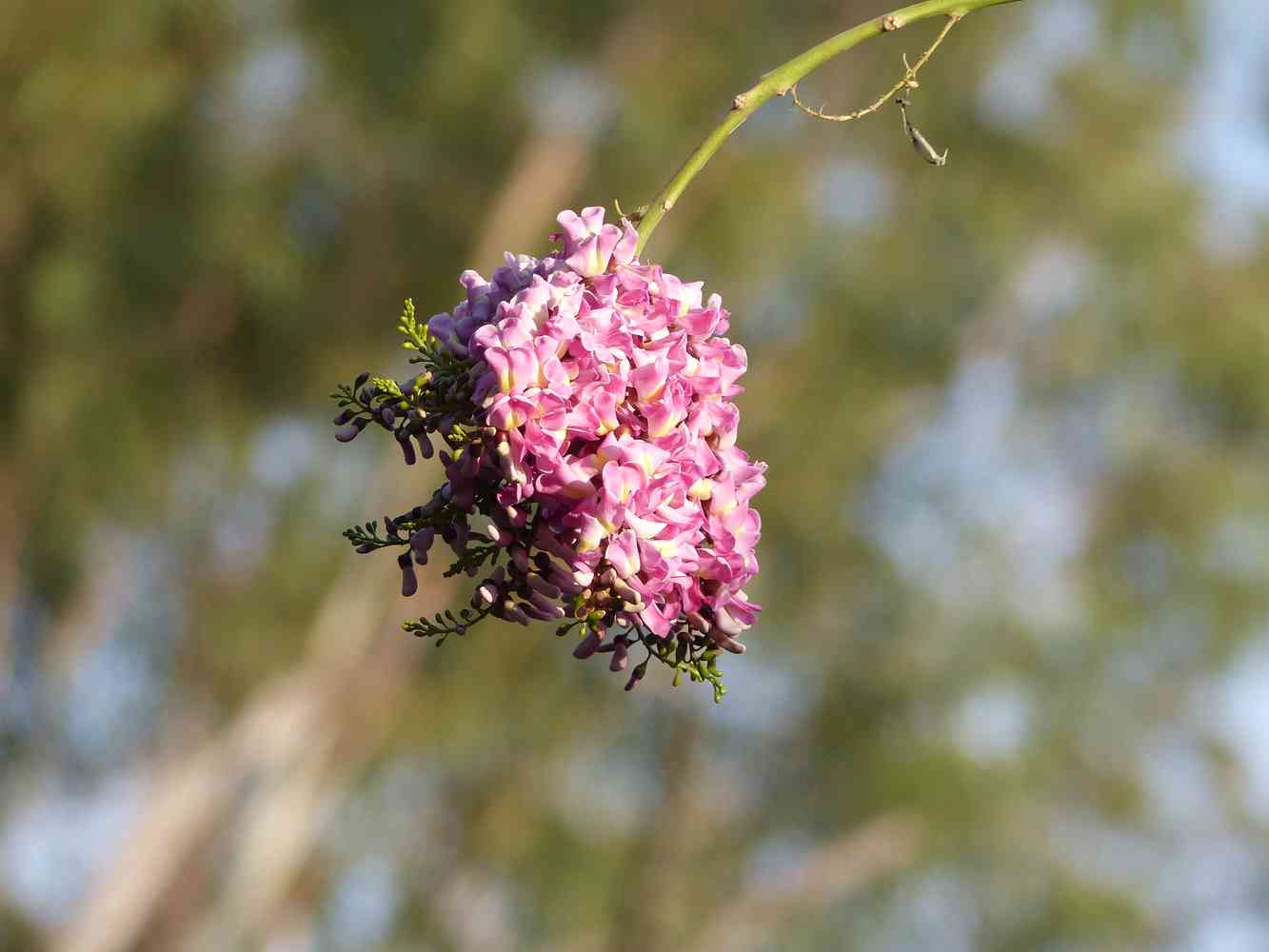
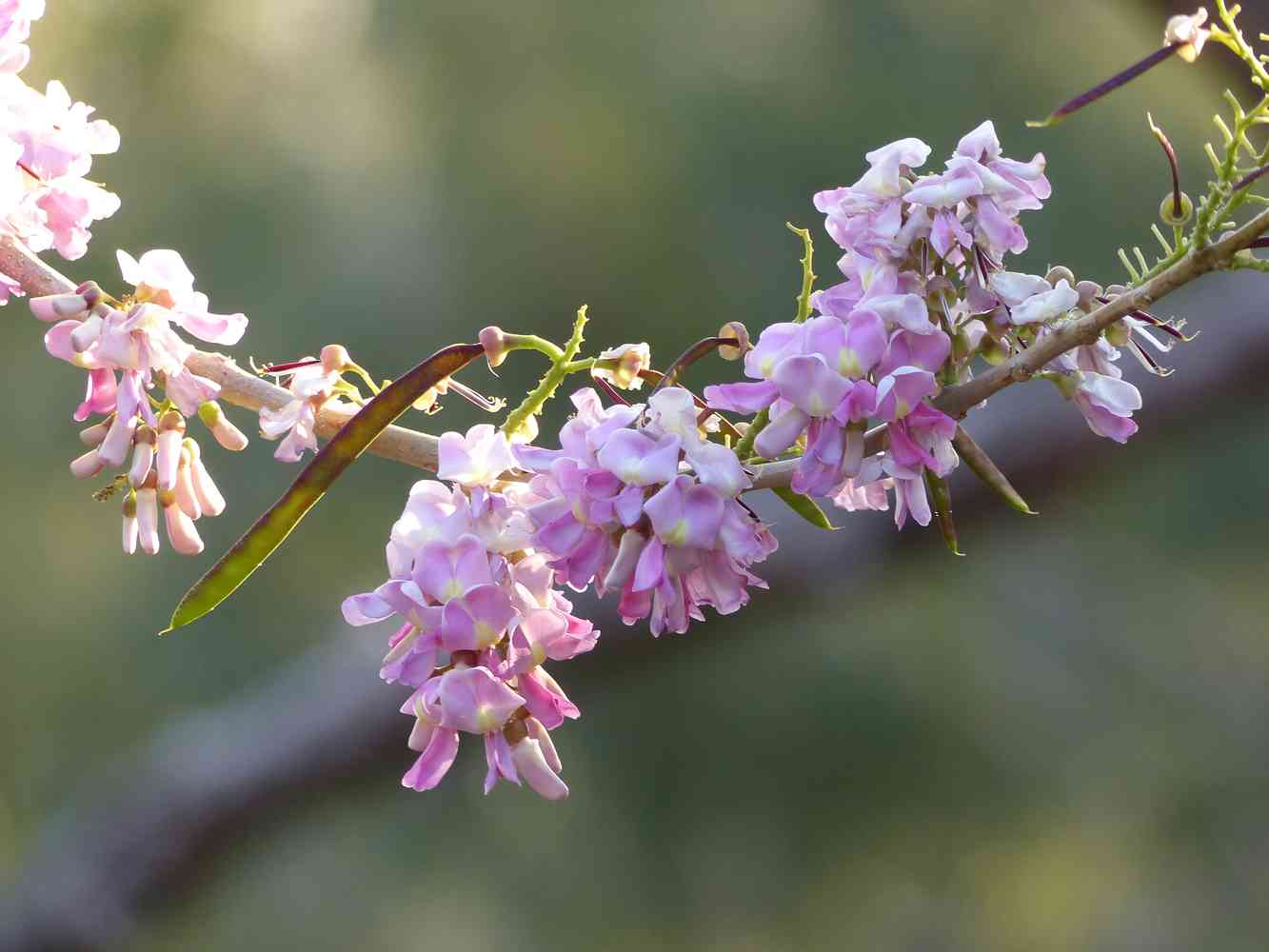
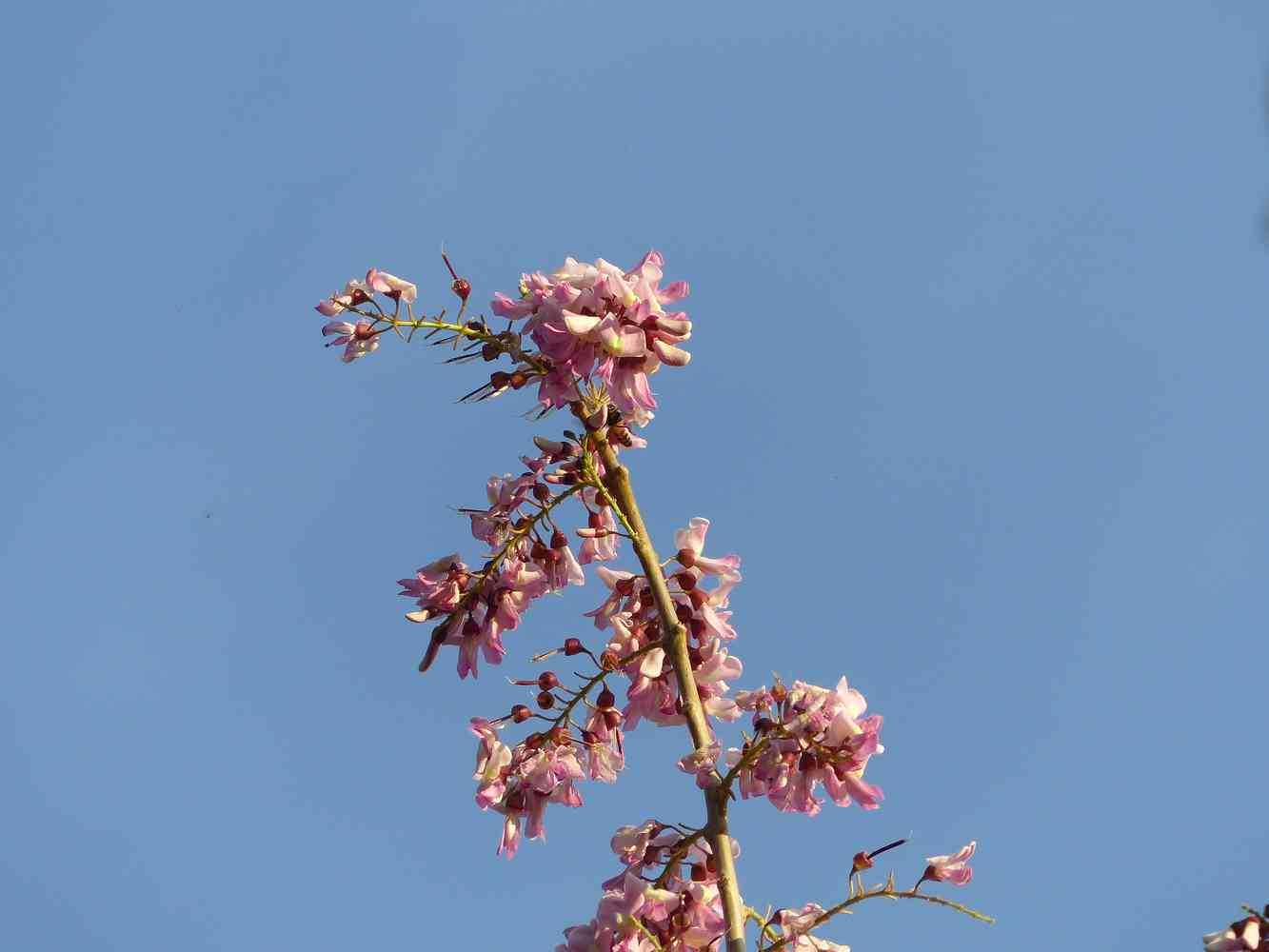
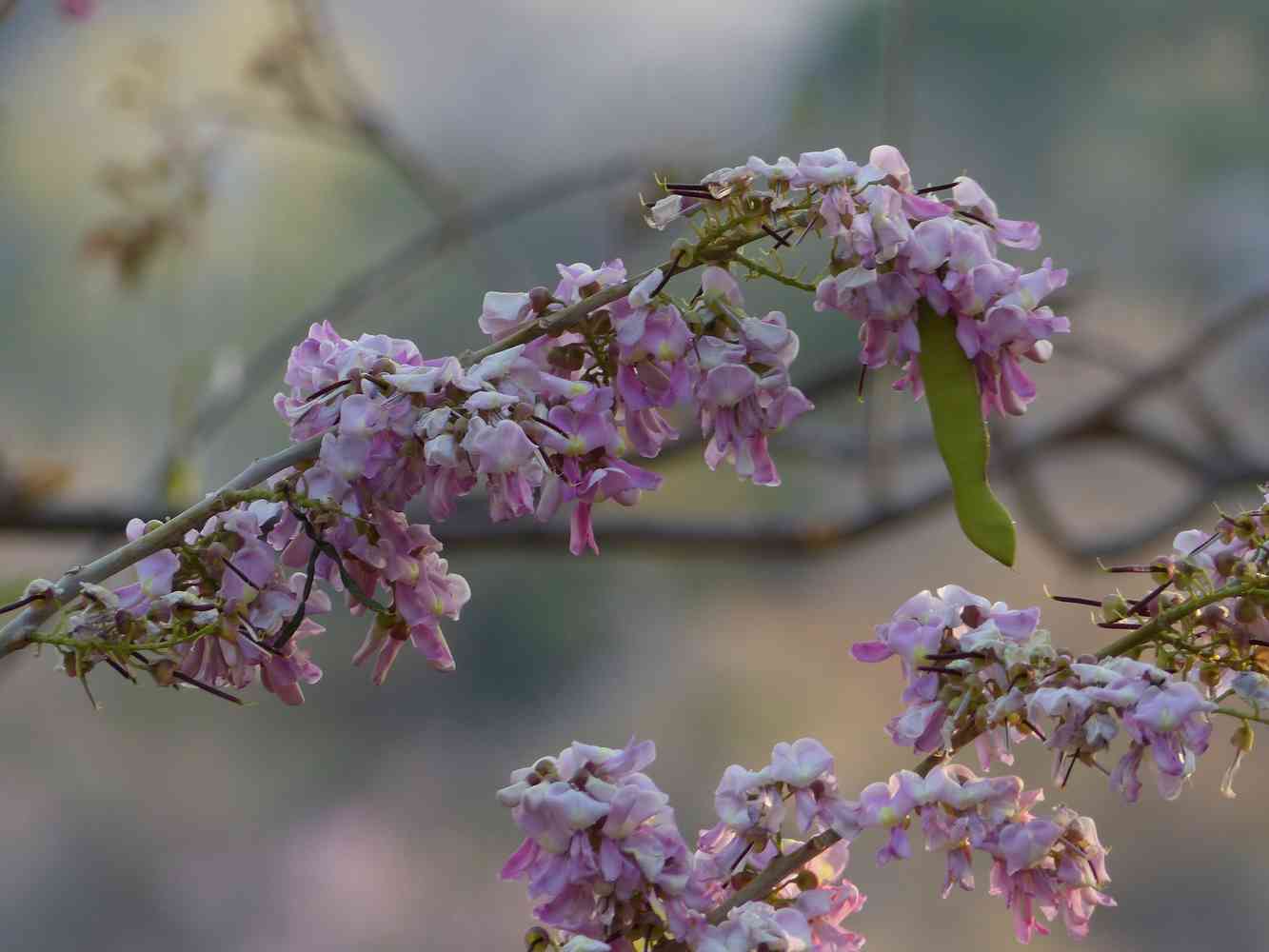
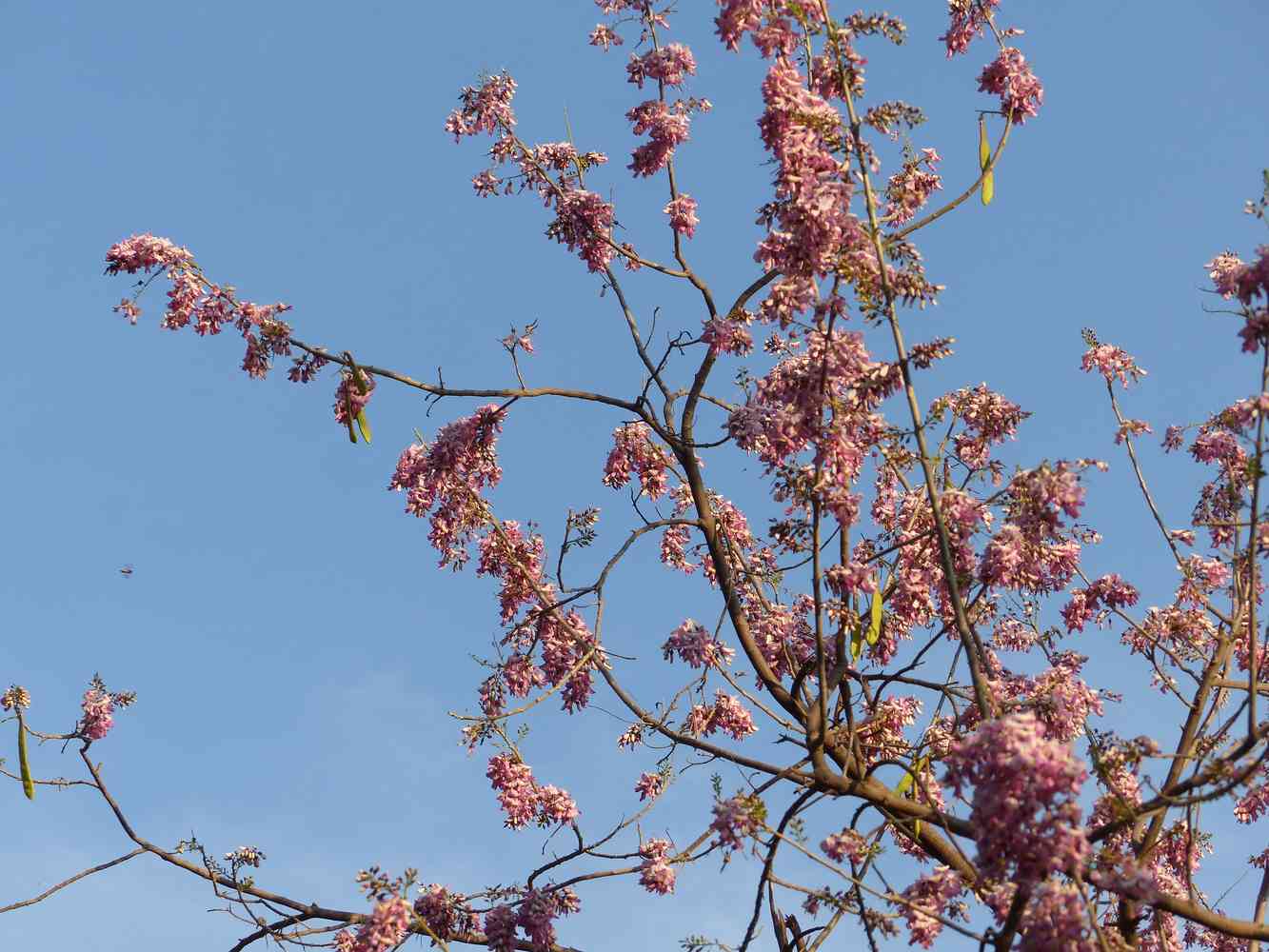
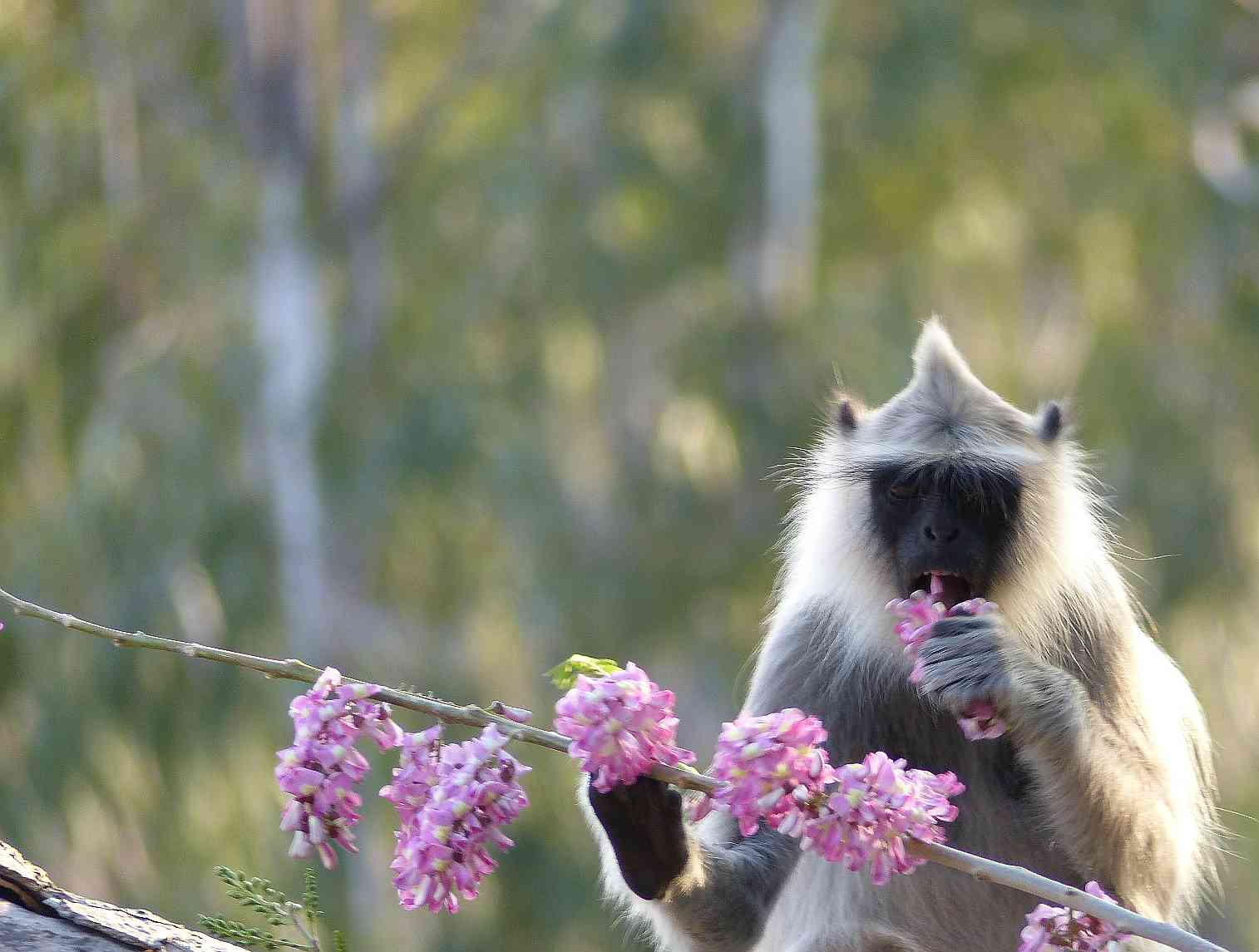
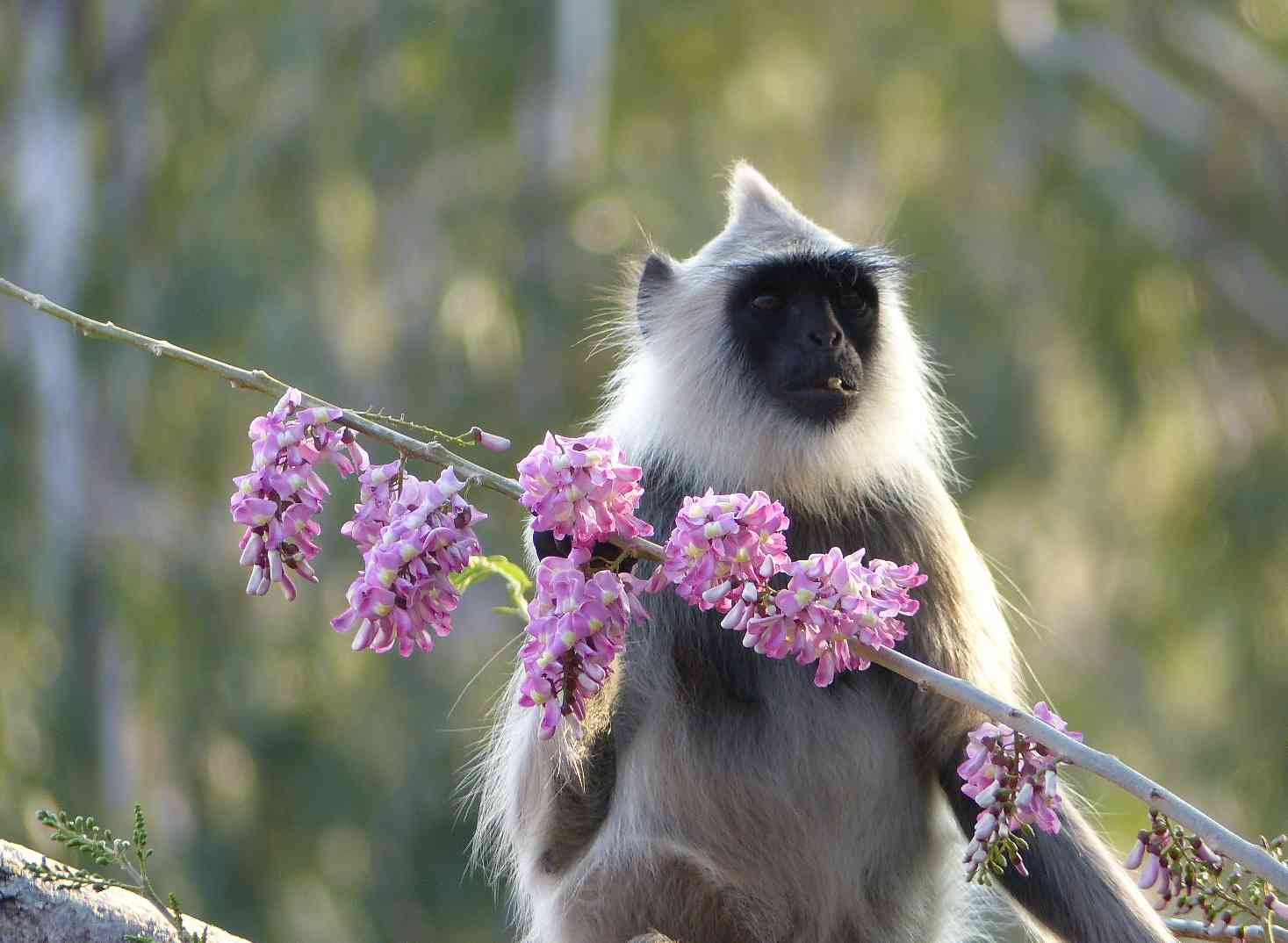
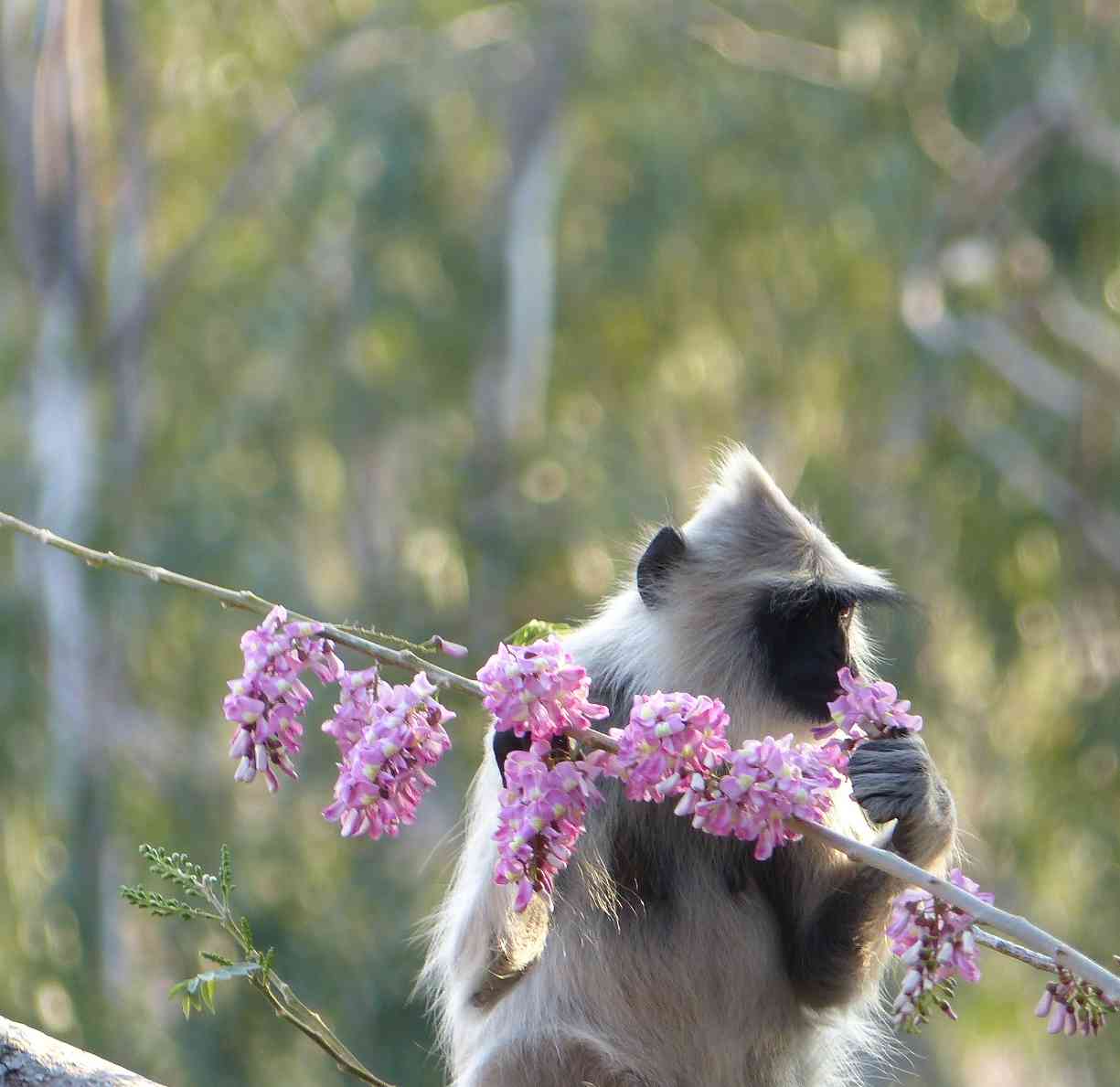
Gliricidia sepium, known as Quickstick and Mother of Cocoa, is native to the Pacific Coast of Central America. Introduced to India as a garden ornamental, it has propagated quickly. The woods of Horsley Hills retain very little of their original vegetation. A look at the unadorned surrounding hillscapes suggest what the topography might have been like had William D Horsley, collector of Kadapa in the 1840s, not “discovered” this hill station for the British administration. Later regimes engendered a spate of social forestry that populated the rocky scrub landscapes with eucalyptus, conifers and a variety of introduced ornamentals that have since proliferated. Gliricidia, too, may have been a garden escapee now well entrenched in these parts.
I am greeted by whoops and whistles of mild alarm as I park and step out of the car. I am being watched by thirty-odd pairs of eyes, big and small. A few minutes later, the langurs decide that I am reasonably unthreatening. They relax. Some of the bolder ones limber down from the trees and fan out over the macadam as they cross the road to the other side, where more Gliricidia await ravenous deflowering.
A motorcyclist approaches. Unperturbed, the monkeys step aside to let him pass.


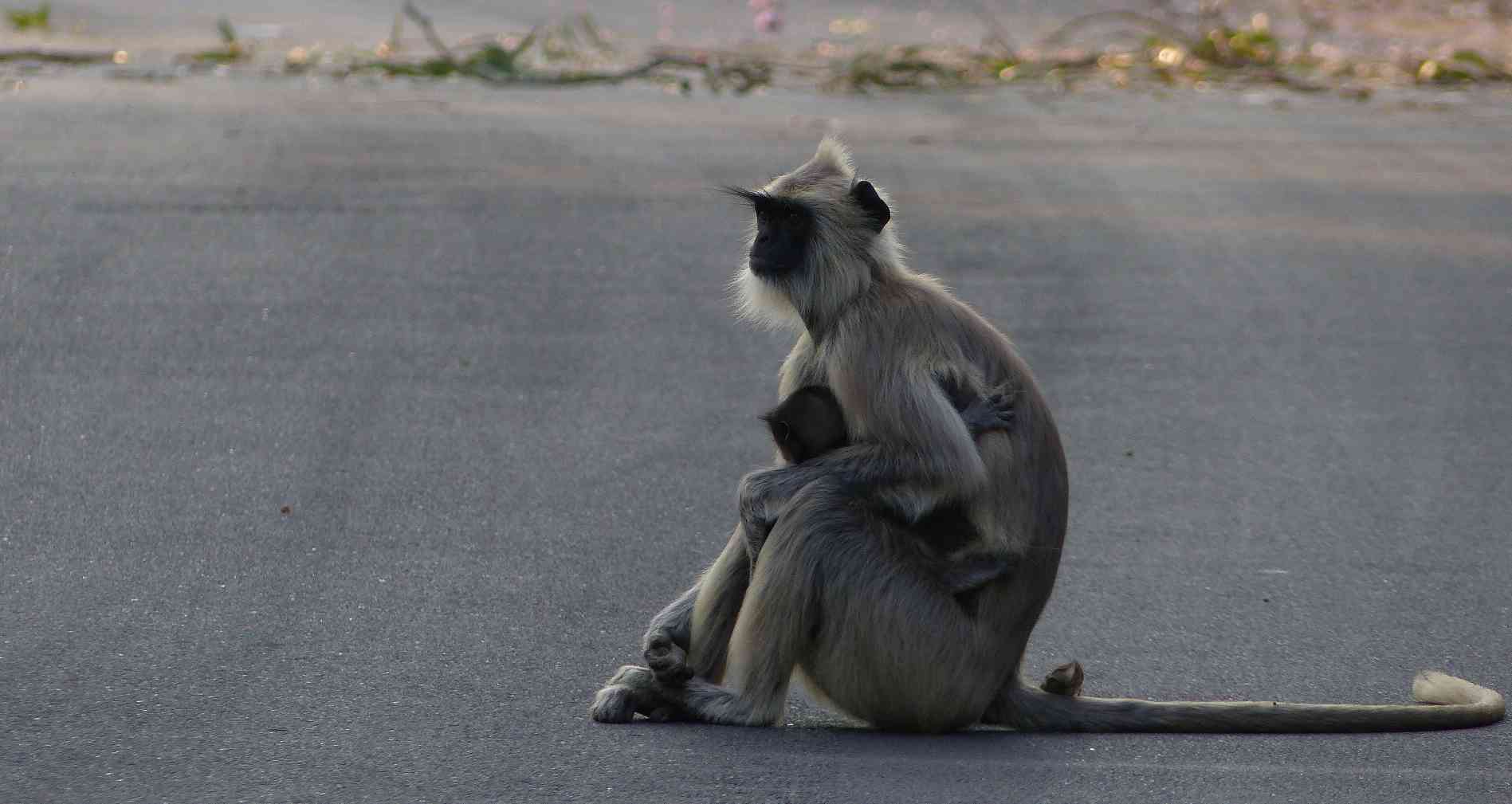
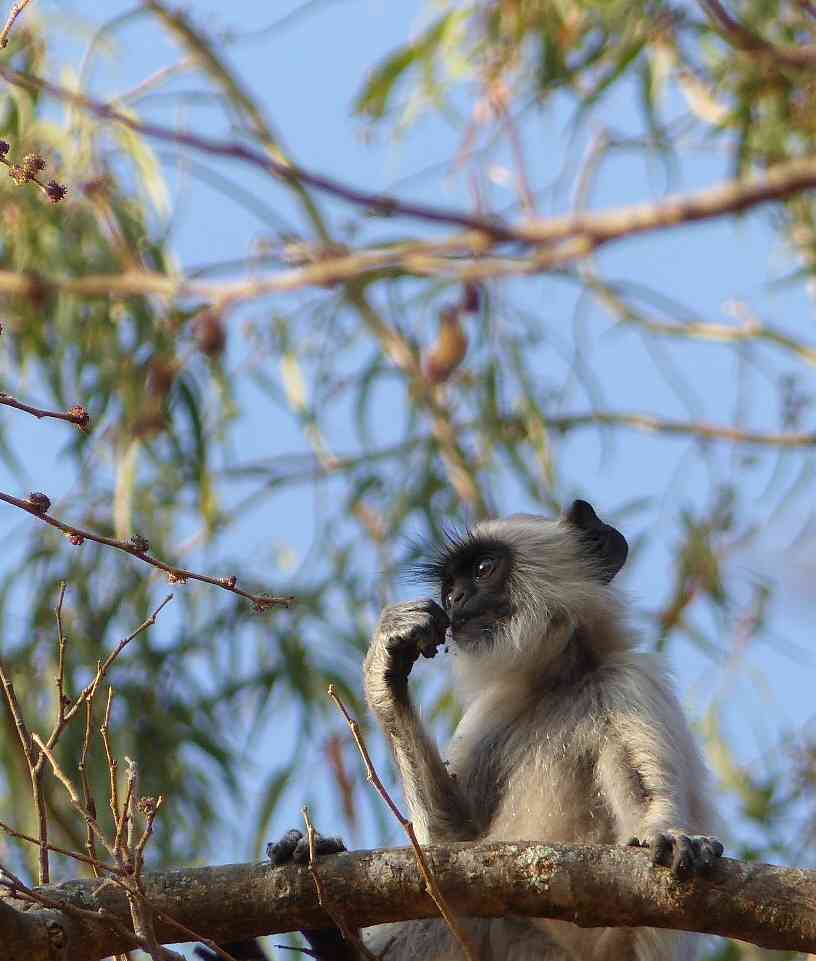
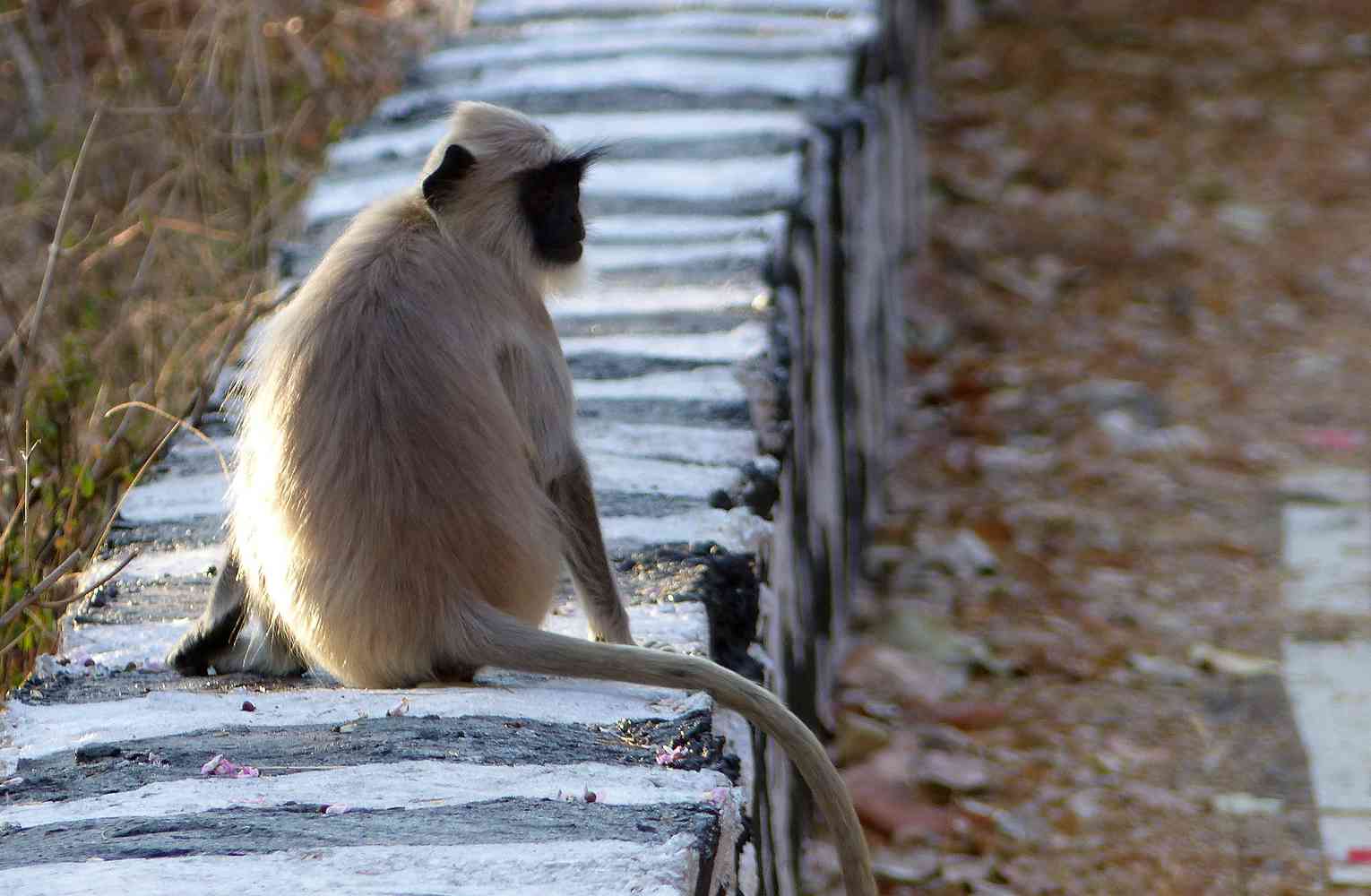
The Tufted Gray Langur (Semnopithecus priam), formerly treated as a subspecies of the Hanuman Langur, has been called out as a distinct species by taxonomists as a consequence of DNA studies. A tip for field identification: The fur on the head is peaked into a tuft or crest, not very unlike the look Aamir Khan set off in Dil Chahta Hai — it’s easy to see that inspiration came from our own simian forebears.
There are two recognised subspecies of the Tufted Gray Langur — Semnopithecus priam priam, which occurs in the southern Western Ghats and Sri Lanka, and Semnopithecus priam thersites, which occurs in the dry deciduous forests of Andhra Pradesh and Tamil Nadu. The continuing loss of habitat in Andhra Pradesh has pushed the species into decline, necessitating their classification as Near Threatened by the IUCN.
Devouring the flowers with relish, the monkeys leap nimbly in the treetops, amid much shaking and scattering of the pink petals. The road is now stippled with pink — a welcoming carpet for some dignitary. Since there are few other humans active around here at this time, I can only surmise that the welcome is in my honour.
Many thanks to Karthikeyan Srinivasan for identification of the tree as Gliricidia. His magnificent blog is a fantastic resource for those keen to learn about flowering trees
- TL;DR – Death Stalks Like A Marabou Stork - July 24, 2024
- Dimorphic Egret – Meet this East African mystery bird - June 8, 2024
- Encounter: Northern Treeshrew in Arunachal Pradesh - May 19, 2024

